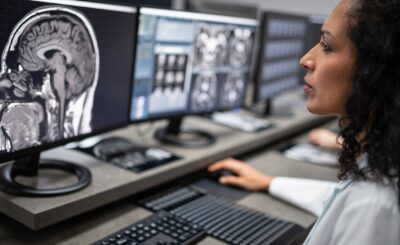Amblyopia refers to the condition in which people face serious problems related to their eyes. It is also known as lazy vision and lazy eye. During the age of childhood or infancy, individuals develop poor sight in the area of their one eye.
If you leave this condition untreated in your children, it can be worse with the passage of time. Now the question is how this condition can affect the vision of your child? A child with the condition of amblyopia experiences a blur of vision in one eye.
The other eye works properly with a clear vision. The brain starts ignoring the eye that has blurred vision and uses the eye which has a clear vision. After this, the brain depends on the eye that is stronger. It makes the weak eye worse.
Risk Factors
Certain children can be vulnerable to developing the problem of amblyopia if they have the following risk factors.
- Developmental disabilities or premature birth
- Having a family history of the issues of eye
In children, amblyopia is a common problem that causes loss of vision. It can affect two to four percent of children at the age of 15. Furthermore, this problem may have no apparent symptoms in some children.
But if it is not properly diagnosed and treated at the age of childhood, it can lead to consistent eye issues in children. It is important to have regular eye checkups in order to avoid the problem of amblyopia.
Causes
When the ability of focusing becomes different in both of the eyes in an individual, he or she may have amblyopia. Other vision issues can cause the development of the problem of amblyopia. It is necessary to treat such conditions on time.
The reason is brain becomes dependent on one eye that leads to amblyopia. There are certain eye conditions that can cause amblyopia. These are refractive errors. It affects the passage of light from the area of your eyes. These errors include:
- Astigmatism: It is the condition in which the cornea is curved.
- Nearsightedness: It is also known as myopia. It occurs when people face problems in seeing objects that are far away from them.
- Farsightedness: It is also termed hyperopia. It appears in an individual when he or she may face trouble in seeing the objects that are close.
Strabismus
This term is used for crossed eyes. Normally, eyes move as a pair during any movement. You see them moving together. If one becomes up or down or drifts, the brain starts depending on one eye as compared to the other. It causes amblyopia.
Structural Issues
Sometimes any structural problem can cause the condition of amblyopia. It includes having scars on the area of the cornea, astigmatism and droopy eyelid, and cataracts. Moreover, cataracts cause blurry vision and the appearance of cloudiness in the area of lenses.
Symptoms That Indicate Amblyopia
It is not necessary that someone may have the problem of amblyopia always if he or she is experiencing a blur vision or other eye issues. Mostly, the condition remains undiagnosed until you take your child for an eye test to the clinic of an eye specialist.
Every child should get the chance to have vision screening on an early basis. Notice the symptoms of eye issues in your child and take them to an eye specialist if you suspect the conditions like amblyopia in them.
It helps to treat eye problems on an early basis. Even it saves your child from getting serious eye issues later. However, a child with the problem of amblyopia may manifest the following indications.
- Having crossed eyes
- Tilting of head consistently to one side
- Bumping into certain things a lot
- Favoring one bodyside
- Having a greater difference in farsightedness or nearsightedness between the area of two eyes
- Shutting the one eye
Diagnosis
An eye specialist may put certain drops in your child’s eyes in order to make pupils bigger. They may cover the area of one eye to test the other. Sometimes doctors advise a child to read certain letters in order to check his or her vision.
Treatment
Following are certain treatment options that an eye specialist may recommend to your child if he or she is experiencing the symptoms of amblyopia.
- Eye drops
- Glasses
- Eye patches for children
- Surgery








